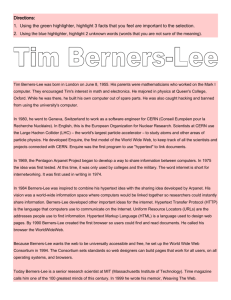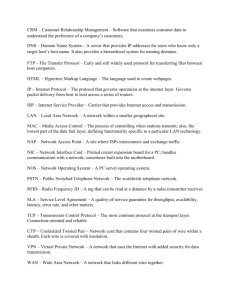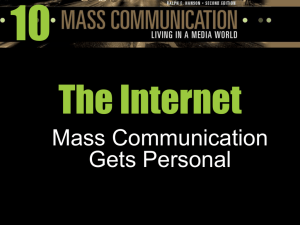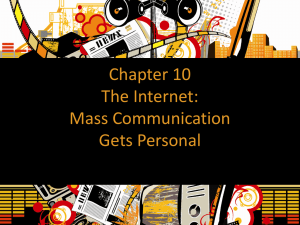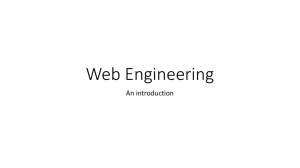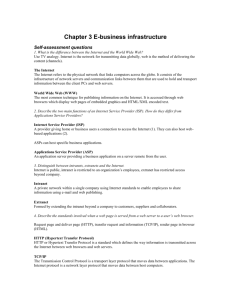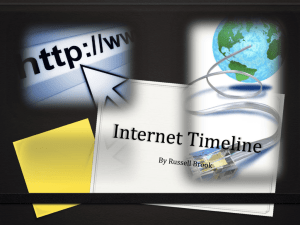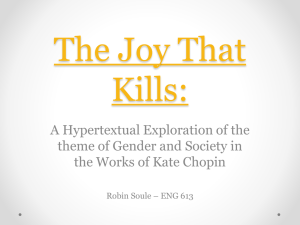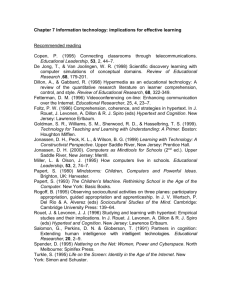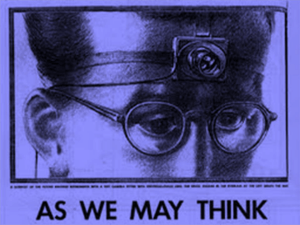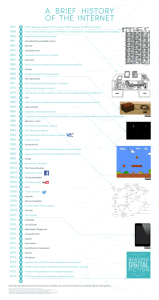Computation as a Medium
advertisement
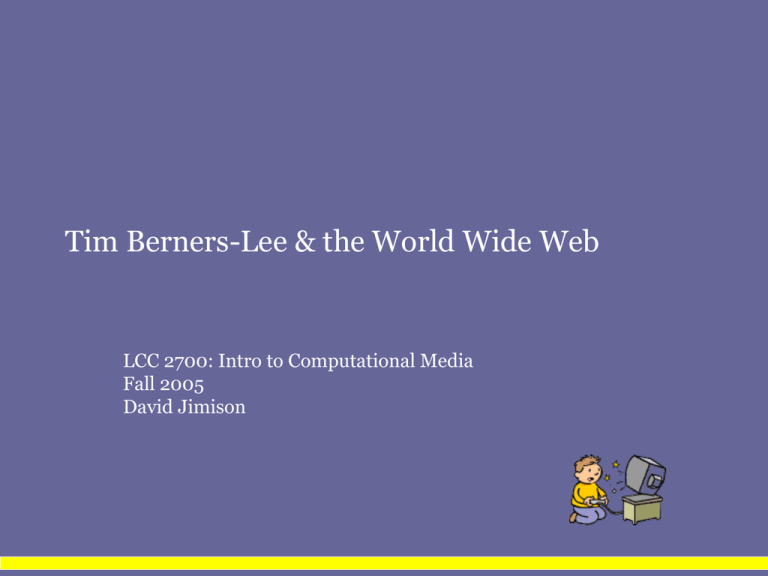
Tim Berners-Lee & the World Wide Web LCC 2700: Intro to Computational Media Fall 2005 David Jimison Quick Internet History • 1962 J.C.R. Licklider promotes his idea of a “galactic network” at the Advanced Research Projects Agency (soon to be DARPA) • Designed to survive large network losses and remain operational • Four centers had first network • 1984 Domain Name System Developed • 1989 Internet begins to be commercialized. First dial up internet service provider starts • 1991 Tim Berners-Lee introduces the World Wide Web Map of the internet 1998 – Wired Magazine Sir Timothy Berners-Lee • • • • • Born in England in 1955 Banned from using Oxford Computer after being caught hacking Built a computer from an old television and an M6800 processor Began working at CERN, the world’s largest particle physics lab Built a prototype of the WWW called Enquire in 1980 Launching the Web • • • • • First web page created in 1991 Poster at the ACM Hypertext conference There were already other methods of sharing information – Gopher – BBS First web page: http://www.w3.org/History/19921103hypertext/hypertext/WWW/News/9201 .html Berners-Lee quote: • “I didn't invent the hypertext link either. The idea of jumping from one document to another had been thought about lots of people, including Vanevar Bush in 1945, and by Ted Nelson (who actually invented the word hypertext). Bush did it before computers really existed. Ted thought of a system but didn't use the internet. Doug Engelbart in the 1960's made a great system just like WWW except that it just ran on one [big] computer, as the internet hadn't been invented yet. Lots of hypertext systems had been made which just worked on one computer, and didn't link all the way across the world. • I just had to take the hypertext idea and connect it to the TCP and DNS ideas and -- ta-da! -- the World Wide Web.” What does the World Wide Web consist of? • Universal Resource Identifiers (URIs) are the names that represents the address of the server • HyperText Transfer Protocol (HTTP) is the system used to send data between the client and the server. It can encompass a wide range of data types. • HyperText Markup Language (HTML) is the structure of rules that encompass the data of a web document. This consists of tags such as: – <html> to represent the language that is being used – <a href> an anchor to another document – <img src>a method of inserting an image into the document Why did the Web Win? • • • • • There were many different systems available for use Patent and Royalty free system Easy to Use Easy to Create World Wide Web Consortium W3C.org · · · · · · Founded in 1994 Jointly administered from Boston, Japan, and France Has offices all over the world Creates standards and guidelines to be used by the web In order for the Web to reach its full potential, the most fundamental Web technologies must be compatible with one another and allow any hardware and software used to access the Web to work together. W3C refers to this goal as “Web interoperability.” By publishing open (non-proprietary) standards for Web languages and protocols, W3C seeks to avoid market fragmentation and thus Web fragmentation. Outside corporations develop other software that does not always follow these guidelines. (ie. Internet Explorer) From Yesterday to Now •Pioneers of the web helped to establish its direction http://web.archive.org/collection s/pioneers.html •528 Million can view Flash animation content •136 Million Americans use the internet – over half own high speed connections The Semantic Web • • • Intends to give meaning to the content of the web Machine to understand the information that it is presenting and make associations and connections with it Uses several different mark up languages for users to create their own meta language. An Example of the Semantic Web • BY MIGUEL SALMERONAt the doctor's office, Lucy instructed her Semantic Web agent through her handheld Web browser. The agent promptly retrieved information about Mom's prescribed treatment from the doctor's agent, looked up several lists of providers, and checked for the ones in-plan for Mom's insurance within a 20-mile radius of her home and with a rating of excellent or very good on trusted rating services. It then began trying to find a match between available appointment times (supplied by the agents of individual providers through their Web sites) and Pete's and Lucy's busy schedules. (The emphasized keywords indicate terms whose semantics, or meaning, were defined for the agent through the Semantic Web.) The Web’s Future •Is a lack of hierarchy good? •Will the web become a huge shopping mall or a library? •What do people want from ubiquitous connections to the web?
